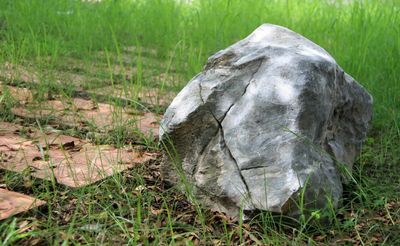How to Use Limestone in the Garden
Limestone is a durable sedimentary rock with a pleasant white color that fits in well in many landscape designs. It is popular both in gravel and slab forms, and can be used for paths, walls, garden beds, accents, and more. The most common application of limestone in the garden is probably in making pathways. Crushed limestone gravel is relatively inexpensive and makes for an attractive, natural looking but durable walking surface. Paths made of large limestone pavers are also popular, but with big slabs some considerations have to be taken into account. Limestone can become slippery when wet, so any slabs that are going to take foot traffic should be textured ahead of time, either with sand blasting or bush hammering. It’s also important to pick stones that can hold up to the elements and foot traffic. Limestone is rated by ASTM International according to hardness– outdoor paths should be made of stones that are rated III. Limestone rated I and II will wear away overtime.
More Limestone Garden Design Ideas
Gardening with limestone isn’t limited to paths. Limestone is also a popular material for walls and raised garden beds. It can be bought as pre-shaped bricks or landscaping blocks. Just remember that limestone is heavy and may take professional equipment to move. If you’re looking for a more natural method of landscaping with limestone, you might want to consider an accent rock or boulder. Uncut limestone rocks can make for a commanding and intriguing presence in your garden. If they’re small, they can be scattered throughout the landscape for added interest. If you have an especially big piece, try placing it in the middle of your garden or yard for an eye-catching centerpiece you can build around.
